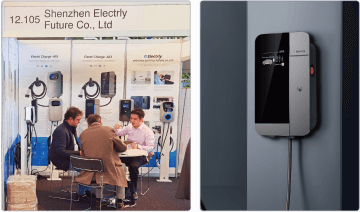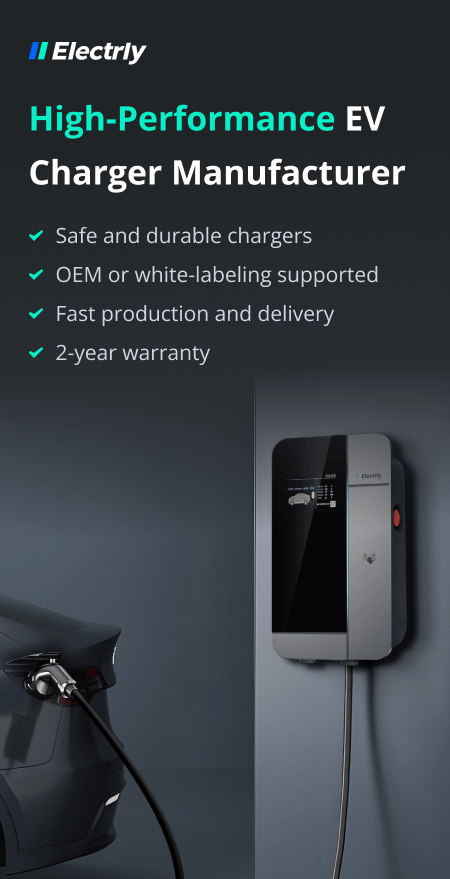If you are considering buying or leasing a Tesla, one of the questions you might have is, ‘can you charge a Tesla in the rain’? After all, electricity and water can be a dangerous mix. However, charging electric cars in the rain is possible if you take certain precautions.
In this article, Electrly explains how to charge your Tesla at home in the rain safely, so that you can still drive your car in inclement weather.
Can You Charge a Tesla in the Rain?
The Tesla is designed so you can charge it in the rain. It has installed safety features for its charging components, including smart cables and port door sealing, to ensure that the electrical current does not flow unless the charger is aligned with the charging port correctly. Therefore, the current will not come into contact with rainwater while you connect the charger.
Tesla vehicles also have software that is designed to detect safety hazards, so the car will not power on if there is the possibility of causing an electric shock.
Is the Tesla Charging Port Waterproof?
The charging port on Tesla vehicles is weatherproof. But you should make sure that the area around the port is clear before you plug it in so that water does not build up around the port and cause damage. If you are using an extension cord, it should be rated for outdoor use to prevent electrical issues if water runs into the cord.
During heavy rain, it is advisable to wait for a break in the downpour before you plug in your car to charge, to avoid water running into the charging port and causing damage.
Is It Safe to Use Tesla Outdoor Charger in the Rain?
The Tesla Wall Connector is designed to be installed outside, so it is weather-resistant and can be used during downpours safely even if it is not located in a garage. Tesla’s software monitors the voltage for possible short circuits and when it detects water, it stops charging the vehicle.
Although the outdoor Tesla wall charger is waterproof, you should still protect it from moisture by keeping the port in the socket or hanging the connector downward when it is not in use to stop water from entering. The Wall Connector must be properly installed and grounded to operate safely.
Most Tesla Supercharger stations are exposed to the elements as they do not have roofs. But they are designed to safely charge vehicles in inclement weather, so you can still connect your vehicle to an outdoor Tesla charger in the rain.
However, the Tesla Gen 2 Mobile Connector that comes with the EV is designed to be used at home to charge your vehicle using a wall plug. It is not weatherproof or designed for outdoor use, so it must be kept away from water to charge safely and cannot be used in the rain.
Tips for Charging Your Tesla in the Rain
There are some precautions you should take when charging a Tesla in the rain:
- Check the charging port and cable for any signs of damage before use.
- Do not use a Tesla Mobile Connector in wet weather.
- When using a Wall Connector, make sure the cover is fastened securely before charging.
- Do not allow the charger to become submerged in water by leaving it on the ground or otherwise out of its holder. Never allow water to run along the cable as it can enter the charging port or electrical outlet.
- Use a charger in your garage rather than another external outlet, as a Tesla charger is specifically designed to be weatherproof.
- When using a public charger, check that the port and charging cord are sealed and shielded from the elements and show no signs of tampering. Avoid chargers located in open areas.
- Only use a high-quality, weather-resistant cable that is designed for outdoor use.
- Try to keep the connector and charging cable as dry as possible.
- Ensure there is no clutter or debris around the charging port that could prevent it from sealing completely.
- Avoid using an extension cord unless it is designed for outdoor use.
- Do not leave your vehicle unattended, to ensure water does not enter and damage the charger while you step away.
- If you do not have a garage or covered parking, consider buying a weatherproof cover for your charger to protect it from water, dirt, and debris and give you extra peace of mind.
What Does the Tesla Driver Manual Say?
The Tesla Driver’s Manual says you can safely charge your vehicle when it is raining. However, the Mobile Connector user manual warns that it should not be “exposed to severe rain, snow, electrical storm or other inclement weather”. It adds that owners should always protect the connector from water, moisture, and other foreign objects.
It also states that you should not plug the connector into an outlet that is covered in water or snow. If the connector is already plugged in, for example when it starts to rain during charging, you should first switch the breaker off before unplugging it.
How Does Tesla Make It Safe to Charge Your Vehicle in the Rain?
Tesla has installed multiple safety features in all its EV models so that charging a Tesla in the rain is possible. Tesla’s operating system is designed to detect irregularities such as moisture getting into the car charger and stop the electrical current from flowing until conditions are safe and the connection between the charger and the car is secure.
The charging ports and cables have been designed with insulation that prevents water from getting in. Tesla has also installed its charging stations with safety features to provide protection from heavy rainfall, even when they are exposed to the elements.
Can You Charge a Tesla During a Storm?
It is technically possible to charge an EV in a thunderstorm, as long as you take precautions. Most importantly, the charging station must be properly grounded to prevent damage from a lightning strike. You should avoid standing in water while charging the vehicle, as this could increase your risk of being struck by lightning.
Tesla advises drivers not to charge their vehicles during a thunderstorm, as a power surge from the charging port can damage the car’s sensitive electrical components and cause it to malfunction.
Tesla also advises charging a vehicle battery to 100% before a storm hits as a precaution so that you can still use your vehicle if the power goes out.
FAQ
Can I charge my Tesla outside in the snow?
Given that snow is less conductive than rain and less likely to run into charging equipment, it is possible to charge a Tesla outside in the snow. Tesla vehicles have an inlet heater for the charging port that defrosts the latch in winter. But you might consider covering your charging port to help prevent it from freezing.
How will cold weather affect EV charging?
As well as potentially freezing your charging port latch, cold weather can alter your vehicle’s charging rate, so you should allow enough time to charge your battery before traveling. In extremely cold weather, you might also experience a drop in the vehicle’s range, requiring you to recharge more frequently.
Should I unplug my Tesla during a lightning storm?
It is not recommended to charge a Tesla during thunderstorms, so you should unplug the vehicle. For increased safety, consider parking your EV inside a garage or building, to avoid it becoming damaged.
Can lightning damage a Tesla?
Electric vehicles are more likely to be damaged by lightning than other vehicles because they contain more advanced electrical components. You should try to keep your Tesla protected during thunderstorms to avoid lightning damage.
Can I wash my Tesla while charging?
You should not charge your Tesla while washing it. Putting the vehicle in Car Wash Mode locks the charge port to prevent water damage. Tesla’s warranty does not cover damage caused by washing the vehicle.


